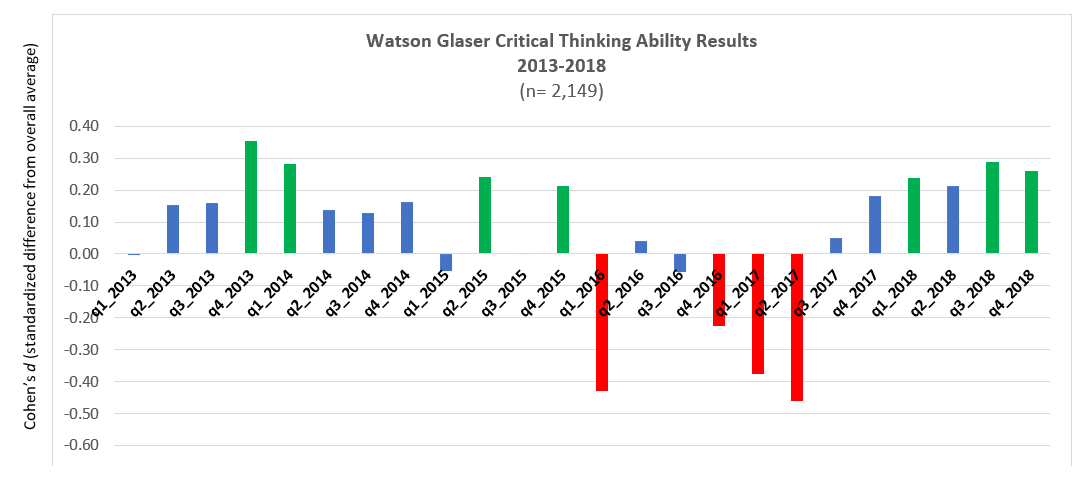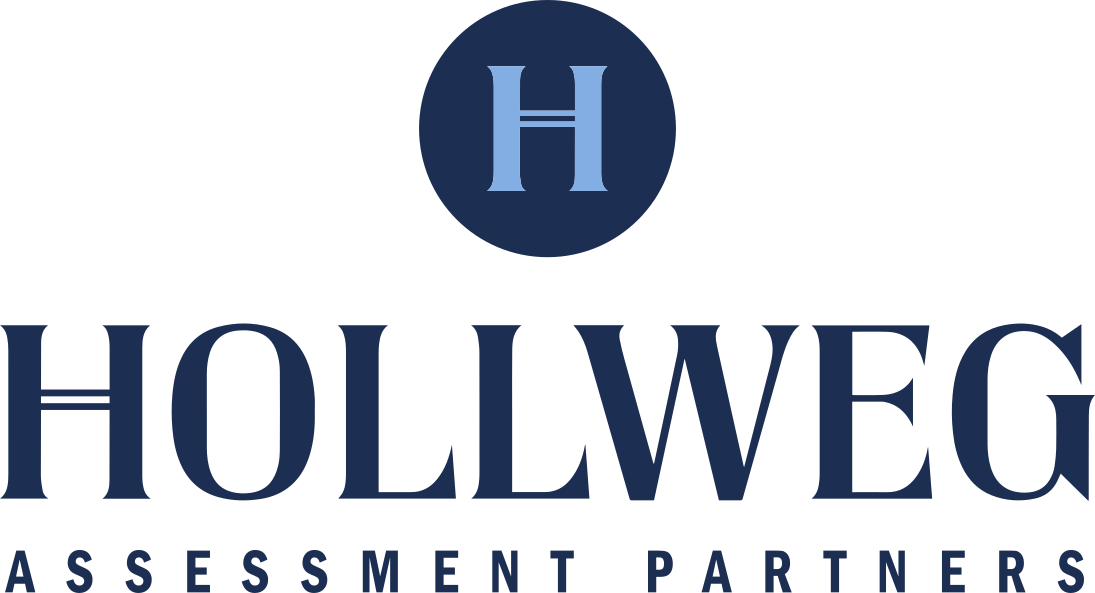Ashley asked the HAP team to investigate an interesting trend she saw unfolding with executives she was assessing. She noticed that leaders were receiving lower scores on a measure of critical reasoning used in the HAP executive assessment battery. She posited that it may have something to do with the polarizing political climate of late where opinions supersede balanced and objective debates on facts. The HAP team dove into the assessment data to answer this question in an empirical fashion and were intrigued by the results.
First, what is critical reasoning, and why is it important for senior leaders? As leaders ascend an organization they are faced with complex problems and strategic decisions that have far reaching impact. They must weigh (often incomplete) information presented to them in a balanced and thoughtful manner while also acting decisively. Given this role demand among senior leaders, HAP has always assessed their critical reasoning ability using the Watson Glaser measure of critical thinking. This measure assesses an individual’s ability to identify assumptions, evaluate arguments, and draw conclusions. Specifically, it identifies how well someone can “read between the lines” to identify implicit assumptions, evaluate arguments in an objective manner, and draw logical conclusions by using the information available to them. Of interest to our current investigation, this assessment includes items which can be political hot buttons, addressing issues such as immigration, universal health care, and labor relations. In the evaluating arguments section of the assessment, individuals are asked to indicate the strength of the arguments for positions on these issues based on the information presented. Keep in mind that individuals aren’t asked their opinion on the issue, rather they are merely asked the strength of the argument based on the logic presented. These controversial items are purposefully included by the publisher as they can provoke emotional responses, thus limiting one’s objectivity. One might expect that during a time of heightened sensitivity to these issues, some can overlook the logic described in the assessment and use their opinion to guide their answer. And that’s exactly what the HAP team found.
HAP collected data gathered from 2013 through 2018 on the Watson Glaser critical thinking measure and broke up the results by quarter. This grouping of data allowed a level of granularity in detecting trends while also including a robust number of leaders represented in each quarter. In the graph below, you can see a precipitous drop in critical reasoning right around the 2016 presidential election. Now it could have been that reasoning scores were collectively lower during this time frame, so the HAP team reviewed results for other, related measures of reasoning we include in our assessment battery. However, the team didn’t find the same pattern with these other reasoning measures. Fortunately, things are beginning to trend up now, but when the next election comes around, will we see the same pattern emerge? We will have to wait and see, but organizations and leaders should take note of this potentially troubling trend.

As a senior leader, where you’re responsible for key decisions which affect employees, shareholders, and customers, you should critically evaluate your thought process to ensure you recognize implicit assumptions, weigh information objectively, and draw conclusions using data and logic instead of letting your preconceived notions drive your decisions. Doubling down on your opinion fueled by an over simplified ideology not only leads to poor decisions, but it closes off the opportunity to have open and thoughtful debate. We need to encourage healthy, reasonable debate that flexes our critical thinking muscle before it collectively atrophies. Are the leaders in your organization flexing this critical thinking muscle?
Now before you assume that it must be your rival political party dragging down the collective critical reasoning results described here, take a step back and think critically to ensure you’re not letting your opinions drive your conclusion.

